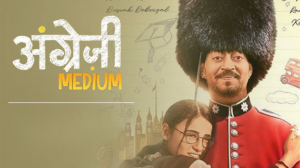
The International Approach to the Indian filmds
Like the subcontinent itself, the Indian film industry is marked by extremes and cultural specificities. The largest cinematographic market in the world in terms of the number of films produced and tickets sold is organized by sector by language. In a country divided into 14 distribution areas, it is more accurate to speak of the Indian film industries. They are often waterproof to each other with the notable exception of Bollywood, in the Hindi language. The latter, because of its professionalism and its media weight, produces titles which are more easily exportable on the national but also international market where “Bollywood” is often misunderstood because seen as an appellation of the Indian film industry in general, all languages combined, although it represents only a minority of total annual production. In putlocker you will find the best of Indian films.

The Contexts
This multilingual and multicultural context creates a particularly complex audiovisual landscape for distributors at the national level. An increased challenge for foreign distributors who hope to sell their productions on Indian screens, and who, like their Indian counterparts, must face the strict content regulation imposed by the Central Board of Film Certification, as well as an audience whose expectations diverge radically from those of European or American spectators. So far, the penetration rate of foreign films in India remains relatively low in a market that seems, according to the figures, to be self-sufficient. Would this be changing with the economic take-off of the country which is creating a growing middle class, more attracted by “Western” cultural products?
The advent of the world’s largest film industry
Cinema was born under the sign of India. The Lumière brothers organized their first public screening at the “Salon Indien” of the Grand Café in Paris on December 28, 1895. A few months later, their assistant, Marius Sestier, organized in Bombay (Mumbai) at Watson’s Hotel, screening session of six of the Lumière brothers’ works, including The Arrival of the Train at La Ciotat station, particularly appreciated by the Indian public. The Times of India invited its readers to discover this “wonder of the century” and its realism so striking that it caused the fright of the spectators, the latter going so far as to leave the room in order to avoid the moving train!
It was not until 17 years later, on May 3, 1913, that Dhundiraj Govind Phalke directed the first silent Indian feature film subtitled in Hindi and English: Raja Harishchandra, which was very successful and really marked the beginning of the Indian film industry. It was followed in 1919 by the first film produced in South India – 2nd cinematographic pole after Bombay in the number of films produced today – in Tamil, directed by Nataraja Mudaliar: Keechaka Vadham. Parallel to the establishment of the representative office of Universal Pictures on the subcontinent in 1916, developed in the 1920s about twenty films, with directors such as Dhiren Ganguly ( England Returned ), Baburao Painter ( Savkari Pash ) , Suchet Singh ( Sakuntala ), Chandulal Shah ( Guna Sundari ), or Ardershir Israni and V. Santharam. The majority of films of the time then dealt with or was inspired by the Mahabharata and the Ramayana.
Last Words
It is from the 1930s that speech appeared in the cinema, while the centers of interest of Indian cinema revolve mainly around the great Hindu epics and the great social themes. Released at the Majestic Cinema in Bombay on March 14, 1931, Alam Ara can be considered the first Indian-speaking film. It is produced in Hindi by the company Imperial Film under the direction of Ardershir Irani. As for Jumai Shasthi, the first film in Bengali, it is produced in Calcutta today the capital of independent cinema and Indian author – without forgetting Kalidass, in Tamil.





